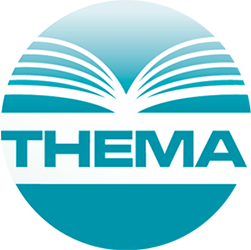On December 3, 2018, the European Commission issued Regulation (EU) 2018/1881, a specific revision of Regulation (EC) no. 1907/2006 regarding the registration, evaluation, authorization and restriction of chemicals (REACH), to include and regulate the nanoforms of substances already regulated. The changes will come into force on 1 January 2020.

It follows that stakeholders (manufacturers, but also other operators in the supply chain, such as importers and resellers) involved in the production of medical devices, active implantable medical devices (AIMD) and in-vitro diagnostic Medical Devices (IVDs) containing nanomaterials, must apply the requirements of Regulation (EU) 2018/1881 as well, even if not directly recalled by MDR and IVDR, and in addition to the REACH Regulation, (EC) 1907/2006.
The use of nanomaterials in Medical Devices can vary considerably, for instance:
- free nanomaterials as a medical device administered to the patient as such (employed for in-vivo imaging – technique that exploits the heating of magnetic nanoparticles of iron oxide and gold, when they are injected directly into the tumor cells and subjected to a magnetic field);
- free nanomaterials in a paste-like formulation (nanostructured polycrystalline ceramic materials for dental restoration, hydroxyapatite/nanopaste powder for filling the bone void);
- free nanomaterials added to a medical device (nanosilver as antibacterial agent in wound dressings)
- fixed nanomaterials employed as coating on implants to increase biocompatibility (nano-hydroxyapatite) or to prevent infection (silver nanoparticles);
- embedded nanomaterials employed to strengthen biomaterials (carbon nanotubes in a catheter wall or added to bone cements).

According to the REACH Regulation (applicable to substances manufactured or imported into the EU in quantities equal to or higher than 1 tonne/year), nanomaterials are treated like any other chemical substance. One of the requirements is the submission of an application for the registration of the substance containing nanoforms.
The registration consists in the manufacturer/importer’s submission of some basic information regarding the characteristics of the substance and, in the absence of available data, in the performance of tests to characterize its physico-chemical, toxicological and environmental properties. The complete list of substances subject to authorization is set out in Annex XIV of REACH.
Some exemptions exist, such as the case of:
- Medical Devices pursuant to Articles 60 and 62 of the REACH Regulation: “an application for authorization is not required for a substance used in a medical device governed by Directives 90/385/EEC, 93/42/EEC or 98/79/EC, if this substance has been identified in Annex XIV for human health reasons only “or
- IVDs pursuant to Article 56 (3) of the REACH Regulation, when a substance, pure or in mixture, is a necessary part of an in-vitro diagnostic method (e.g. it is a reagent, calibrator, control material or kit). The IVD is therefore exempted from the authorization requirements if the activity is carried out under controlled conditions (on a laboratory scale), in the context of scientific research and development (SRD) and involves a volume of less than one tonne/year/authorised person. This exemption also covers IVD medical devices for veterinary purposes.
The amendments listed under Regulation (EU) 2018/1881, meaning the modified Annexes I, III and VI-XII of REACH, clarify which information must be provided within the registration dossiers of the disciplined chemicals (containing nanoforms). Moreover, in the case of nanoforms, the use of computational models is granted to establish Quantitative Structure-Activity Relationships (QSAR) that allow to predict the biological activity and the physico-chemical properties of nanomaterials.

Such computational models may be used in the absence of experimental data and provided that the manufacturer/importer responsible for the registration provides a justification and a “description of the range of characteristics / properties of the nanoforms to which evidence can be applied“.
The European Chemicals Agency (ECHA)
IIs the agency responsible for the evaluation of the information transmitted during the registration of chemicals within the REACH processes (registration, evaluation, authorization and restrictions) and CLP processes (related to classification, labelling and for the packaging of substances and mixtures) framework.
ECHA must be able to carry out their taska related to nanoforms, as well as it would for any other form of a substance and must have sufficient scientific and technical capacity to do so. The amendments to Annexes I, III and VI-XII of REACH refer precisely to these processes. Therefore, ECHA advises stakeholders to familiarize themselves as soon as possible with the amendments to evaluate what actions to take to comply.

Otilia Maya Tanase, PhD
Regulatory Affairs & Marketing Specialist
Thema Srl is passionately dedicated to saving lives and preserving the health of men, women, children and animals. Our goal is to provide worldwide access to people and animals to cures, treatments and quality products that are increasingly safe and effective.
Have you already read the “Person Responsible for regulatory compliance: the Regulatory Affairs expert training” article and downloaded the “MDR&IVDR Rolling Plan Infographic”?
Download our white paper “Nanomaterials: the safety evaluation and risk assessment in Medical Devices” and dive deeper into the changes brought by MDR (UE) 2017/745.



